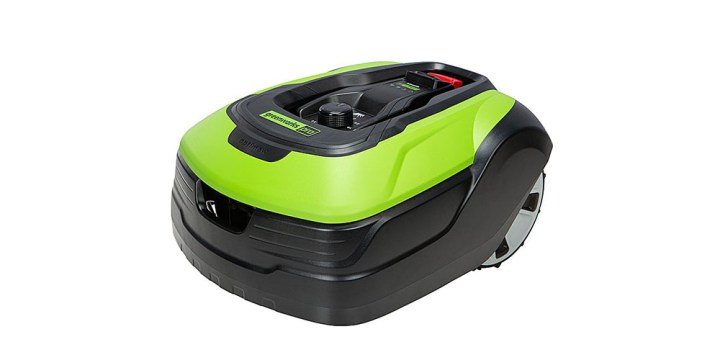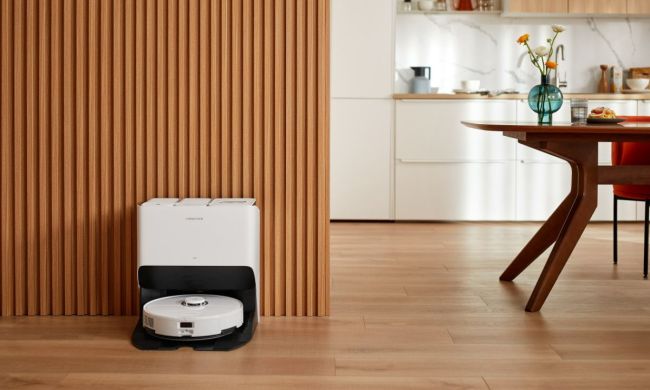If you’ve already upgraded from a vacuum cleaner to a robot vacuum, you’re definitely ready for the next step: A robot lawn mower. Getting an effective robot lawn mower takes some careful decision making and once you get one you’ll save time and energy again and again on one of the most annoying seasonal tasks.
But at the same time, having a semi-autonomous robot with sharp blades running around your yard is scary. Plus, you might worry if robot lawn mowers are worth it, could they get stuck on taller wet grass or destroy their blades on a rock at any moment?
Here, we look at the ins and outs of picking one of the best robot lawn mowers as well as provide you with our top three choice for yards, based on size.
The best robot lawn mowers
- Best for large lawns:
- Best for medium-sized lawns:
- Best for small lawns:
How to choose a robot lawn mower
If you’re completely new to the concept of robot lawn mowers, it’s best to start by learning how robot lawn mowers work to get a good sense of what they can and cannot do, as well as get a good sense of what you’re getting yourself in to. (You should expect to be burying guide wires around your yard, for instance.) From there, you’ll want to think about these factors to get an even better idea of what you need.
Safety features
Lawn mowers are dangerous when people are involved, so it makes sense to be wary of a robot lawn mower. However, a robot lawn mower can be perfectly safe and doesn’t require an operator, which means one less person to injure with the blades. All of the best robot lawn mowers have object detection or specialized child detection features to keep you, your family, neighbors, and local wildlife safe. Be sure to investigate what is being offered with a careful, skeptical eye.
Environmental handling
If you’ve ever operated a push mower before, you know that hills, tall grass, and wet grass are the bane of a mower operator’s existence. Don’t necessarily expect that any robot mower can handle them. When purchasing a robot lawn mower, look for explicit indications from the manufacturer about what conditions it can handle. Some can go up hills as steep as 22-degrees or more, for instance. If you have a lot of tree coverage, see if the robotic elements of the mower need a clear path to the sky to operate.
While on the topic of environment, check out your robot lawn mower’s water resistance as well. An official rating of IPX5 or better is a good sign your mower can get through some trouble, for instance.
Size and storage
Where will you house your robot lawn mower? For most, you might be able to get away with housing them under a table or workbench in your garage as they don’t have the same vertical space riding or push mowers have. Check this factor carefully if space is limited.
Weight
One of the best parts about a robot lawn mower is that you don’t have to expend the energy and strength to push it around. That means that if you have a hernia, upper or lower body injury, or just plain old arthritis, that you’ll have a great time with one. However, if you do run into issues with your robot lawn mower, you’ll want to be able to pick it up or move it. If possible, try to not get something so heavy that it will hurt you to lift.
How we chose these robot lawn mowers
When we looked at robot lawn mowers and customer interests we found, unsurprisingly, that one of the most sought after categories of robot lawn mower was the robot lawn mower for large yards. We took the hint and broke up our favorite smart lawn mowers into categories based on what size lawn they could handle. From there, we chose the best in each category. Here, we present them in descending order, from large lawns to small lawns. If you do see something you like, but want a differently sized lawn covered, do note that at least a couple of these have alternate versions for other lawn types.
Husqvarna Automower 450XH

| Pros | Cons |
| Triple guide wires for best guidance | Quite expensive |
| Remote object detection | |
| Handles 22-degree slope |
Husqvarna has made a name for itself as one of the most trusted brands of robotic lawn mower makers. Likewise, its large 1.25 acre mower is going to be one of the best for the job. It uses a patented triple guide wire system to accurately define the borders of your large lawn and keep the mower on track. Over the course of a large lawn, you can expect a steep hill of 22-degrees or so here and there, and with the Husqvarna Automower 450XH you won’t have to worry about laying your robot mower’s guidelines around them.
The Husqvarna Automower provides safety for you and your family via its remote object detection system which allows it to see objects ahead of time. Likewise, it protects itself with a rubber front bumper and weather-resistance so strong that it can even mow while it is raining. And, speaking of rain, the Husqvarna will schedule itself to mow more during rainier seasons and less during drier seasons, both as a way to be energy efficient and protect the health of your grass.
| Specifications | |
| Area of coverage | 1.25 acres |
| Size | 29.5″D x 24.8″W x 13″H |
| Weight | 33.7 pounds |
Greenworks Optimow

| Pros | Cons |
| Great customization | Difficult to follow instructions |
| Auto shut-off on lift | |
| IPX5 water-resistant |
For the average lawn, try the Greenworks Optimow. It’s reliable mower that resists water at an IPX5 level and mows heights up to 22-degrees. Its operation is customizable, with both cut height and schedule being selectable by the user. While this means it is largely something you can choose to forget about (after the installation), you can also check on its real-time location via GPS at will or control and manage it via your smartphone on the GreenGuide app.
As with most robot lawn mower, most of the negative reviews for the Greenworks Optimox come from those not prepared for the installation process. Laying out wires is tiring, so know what you are getting in to before you start. That being said, there are a few complaints that the instruction manual is a bit trickier than most. Take your time with it, however, and you will see this is a good robot lawn mower for most average-sized yards.
| Specifications | |
| Area of coverage | 0.5 acres |
| Size | 12.2-inches tall |
| Weight | 26.4 pounds |
Gardena Sileno City

| Pros | Cons |
| Highly reasonable price | Lengthy setup time |
| Operates even in the rain | |
| Handles up to 19-degrees |
A smaller job deserves a smaller payment. That’s why the Gardena Sileno City makes sense for your tiny yard. It is one of the cheapest robotic lawn mowers that you can get, but is still able to handle a decent slope, can operate in the rain, and is completely waterproof if you want to hose it off. This product is perfect for your elder parents’ home with a small yard and will save them a lot of back-breaking work.
The only unfortunate side is that you still have to set it up like other robotic lawn mowers. While that setup might seem worth it for a large yard — do it once and forget it — some might find spending nearly equal amounts of effort for a smaller yard to be unfavorable. But that is less of a gripe with the mower, and more a gripe with reality of any smart mower for small yards.
| Specifications | |
| Area of coverage | 2,700 square feet |
| Size | 21.7″D x 15″W x 9.1″H |
| Weight | 32.1 pounds |




